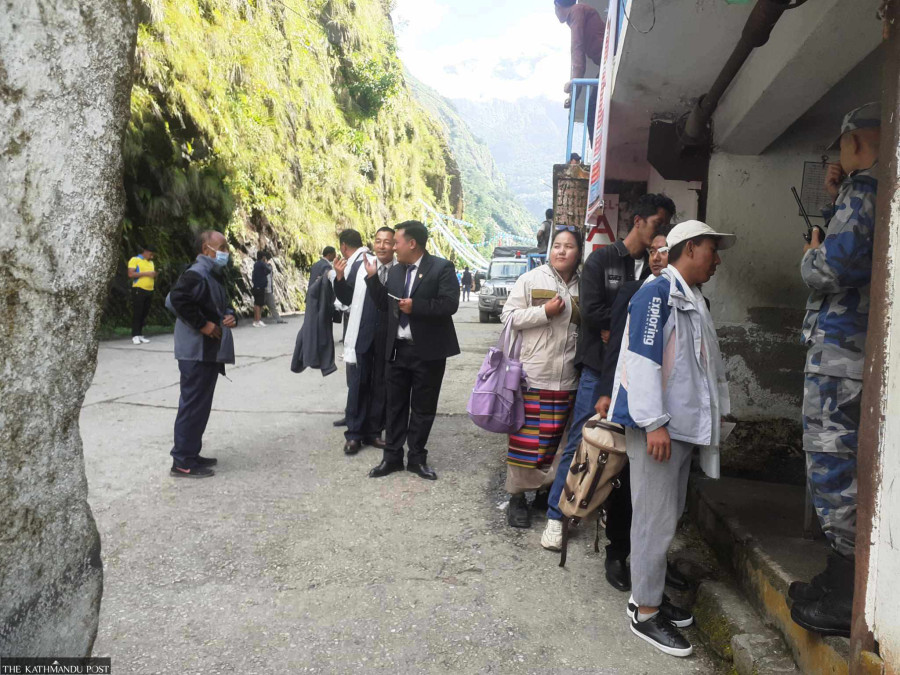Money
Chinese tourists enter Nepal after Tatopani border reopening
According to the Tatopani Immigration Office, 820 Chinese tourists from various provinces of China have entered Nepal from the border point till September 25.
Anish Tiwari
Chinese tourists have started to enter Nepal via the Tatopani border following the reopening of the point on September 1, after eight and a half years.
According to the Tatopani immigration office, 820 Chinese tourists from various provinces of China have entered Nepal from the border point, till September 25.
“The number of visitors in the initial week was very low. Now, 40-50 tourists enter Nepal every day,” said Rabindra Pokharel, chief of the immigration office.
The majority of the visitors are from Lhasa and Shigatse.
Tatopani border point is 124 kilometres from Kathmandu whereas Rasuwagadhi-Kerung, the other closest border point, is 164 kilometres far. Therefore, Tatopani is a preferred choice for travellers from Lhasa and other Tibetan cities to Kathmandu.
In addition to the tourists, eight Nepalis working in China and 204 Chinese working in Nepal have also crossed the Tatopani border point till September 25.
“More than 300 locals are crossing the Miteri bridge to shop in Khasa bazaar,” Pokharel said.
The residents of Sindhupalchok are issued travel passes with a year of validity by the Chinese authority.
According to the immigration office, 5,918 locals have travelled to the Chinese side for trading by obtaining a new entry pass and 500 individuals have renewed their pass till the beginning of this week.
Before the border point shut down in 2015, more than 50,000 foreigners used to travel through it annually, mostly Chinese.
A large number of Indian tourists also used to enter China via this border point to travel to Kailash Mansarovar–a Hindu pilgrim destination in Tibet.
Similarly, the Tatopani hot water spring, which used to be another tourist destination has not reopened. It was also closed due to the earthquake and subsequent floods in the Bhote Koshi River.
Kumar Shrestha, chief of Bhotekoshi Rural Municipality-2, said that the local economy is gradually reviving due to the movement of tourists and traders at the border point.
“The hotels and shops that had remained closed since the 2015 earthquakes have gradually started reopening.”
Raj Kumar Basnet, president of the Sindhupalchok Chamber of Commerce and Industry, added that the locals are optimistic about the border point and nearby trade centres returning to their former glory gradually.
“However, at present only seven containers are passing via the border point each day which is far less than what it used to be before the earthquake. The government must prioritise increasing the number of containers as well.”
Tatopani has bustled as a transit point from ancient times. Porters bought merchandise from Kathmandu which was transferred to mule caravans and transported over the Himalayan passes to various points in Tibet.
After the 2015 earthquake turned the border point into rubble, Tatopani and nearby places like Liping Bazaar wore a deserted look.
On the Chinese side of the border, the infrastructure was soon rebuilt. But little work was done on the Nepal side, and visitors to Tatopani were surprised by the poor state of the infrastructure.
Apart from Miteri Bridge and Tatopani dry port built by a Chinese company, all other essential structures like the immigration office, gates and security posts on the Nepal side are in a dilapidated condition.
The final 26-km stretch of Kodari highway to the border is yet to be repaired, and traders say it is dangerous to drive goods-laden containers on it.




 17.12°C Kathmandu
17.12°C Kathmandu















